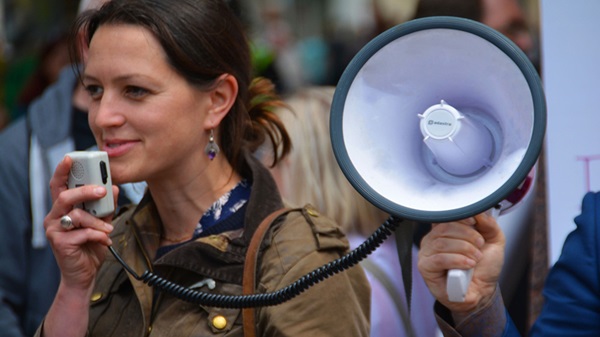Marketers talk funny.
USPs. KPIs. ROIs. Sometimes it seems as if we've slurped a giant bowl of alphabet soup over lunch. Like any industry, we have more than enough jargon.
The buzzworthy term du jour is “inbound marketing.” Let's first look at how this marketing outreach strategy came about.
Clanging cymbals make it harder to hear
Promotion used to be easy. After a message was printed and broadcast across the limited available channels, people saw or heard it and some responded.
Researchers today argue the specifics (The Myth of 5,000 Ads), but most agree that the average person today is bombarded daily by hundreds more ads and marketing messages than in previous decades.
From emails that fill your inbox to boosted posts that interrupt family photos in your Facebook feed to ads intruding the restaurant restroom stall you enter, it's hard to escape the noise … but ever so much easier (and sometimes satisfying) to ignore.
Putting the power in consumer hands
In his post Digital Transformation Impacting Customer Journey, data scientist Sandeep Raut describes today's consumer as:
- digitally savvy
- demanding
- less loyal
In other words, they may not be listening to you.
Inbound marketing changes the dynamics. It focuses on "pulling people where they naturally want to be." It's the signal among the noise.
It's very similar to evangelism in that it...
- attracts the awareness of a stranger by tapping into a need,
- welcomes and nurtures a visitor along the way,
- develops a long-term relationship that supports mutual loyalty,
- encourages new members to invite others.
Can inbound marketing work in my church?
Since marketing experts coined a new word for something you're doing already … sure! Being strategic about every invitation is the key, not only to cut through the clutter to reach potential visitors but also to get them in your door.
Here's an easy, cost-effective plan to help you begin generating and nurturing leads:
- Design a Facebook ad or boosted post that invites visitors and encourages shares among members. When members share your boosted post or paid ad, it expands your message's reach beyond your followers. Be aware that you pay for every click, like or share deriving from a post. While you'll pay pennies for likes and shares, the publicity is worth the investment.
- Create a simple RSVP landing page that outlines what you're offering (an event, a free sermon download, a free book, a chat over coffee at a local hangout) and requires only basic information from the prospect: name, email address and/or phone number.
- Follow up with guests, but don't overwhelm people on social media.
- Understand the information needs of newcomers and tailor “follow us” messages to meet them.
- Think of more new ways to use inbound marketing through other social networks.
Marketers have learned the hard way that people don't want their lives interrupted by constant marketing. Rather, they want to be helped. While the term “inbound marketing” is the latest term for boldfaced strategies, the principles behind it are tried and true. Effective, relevant messaging attracts, welcomes and delights.

— Jane Massey, eMarketing Specialist, is a marketer who talks funny and knows the difference between initialisms (ROI) and acronymns (NASA).

